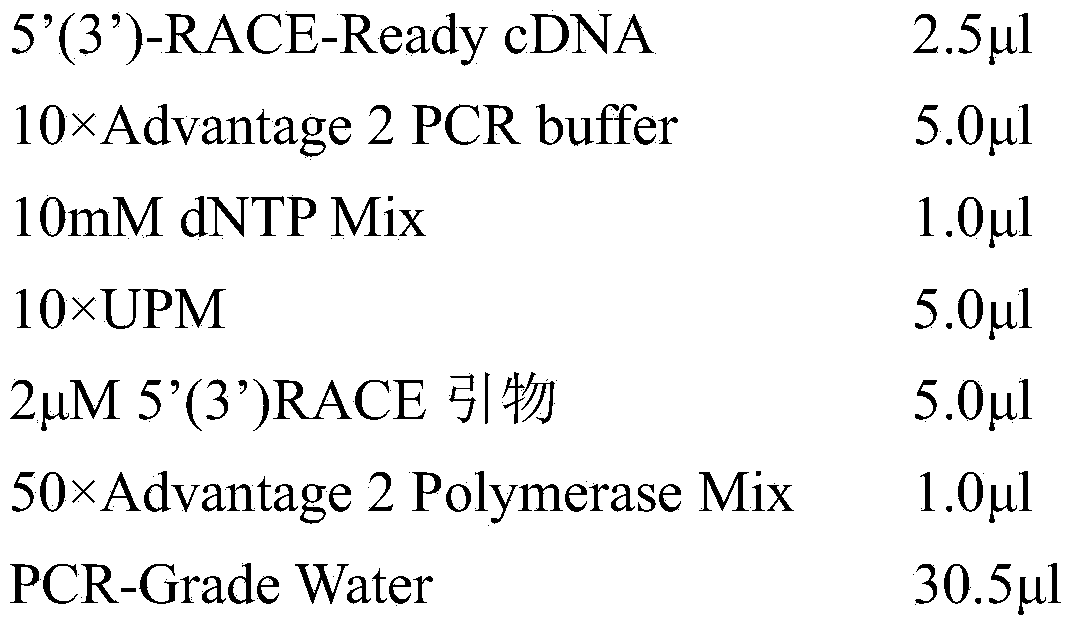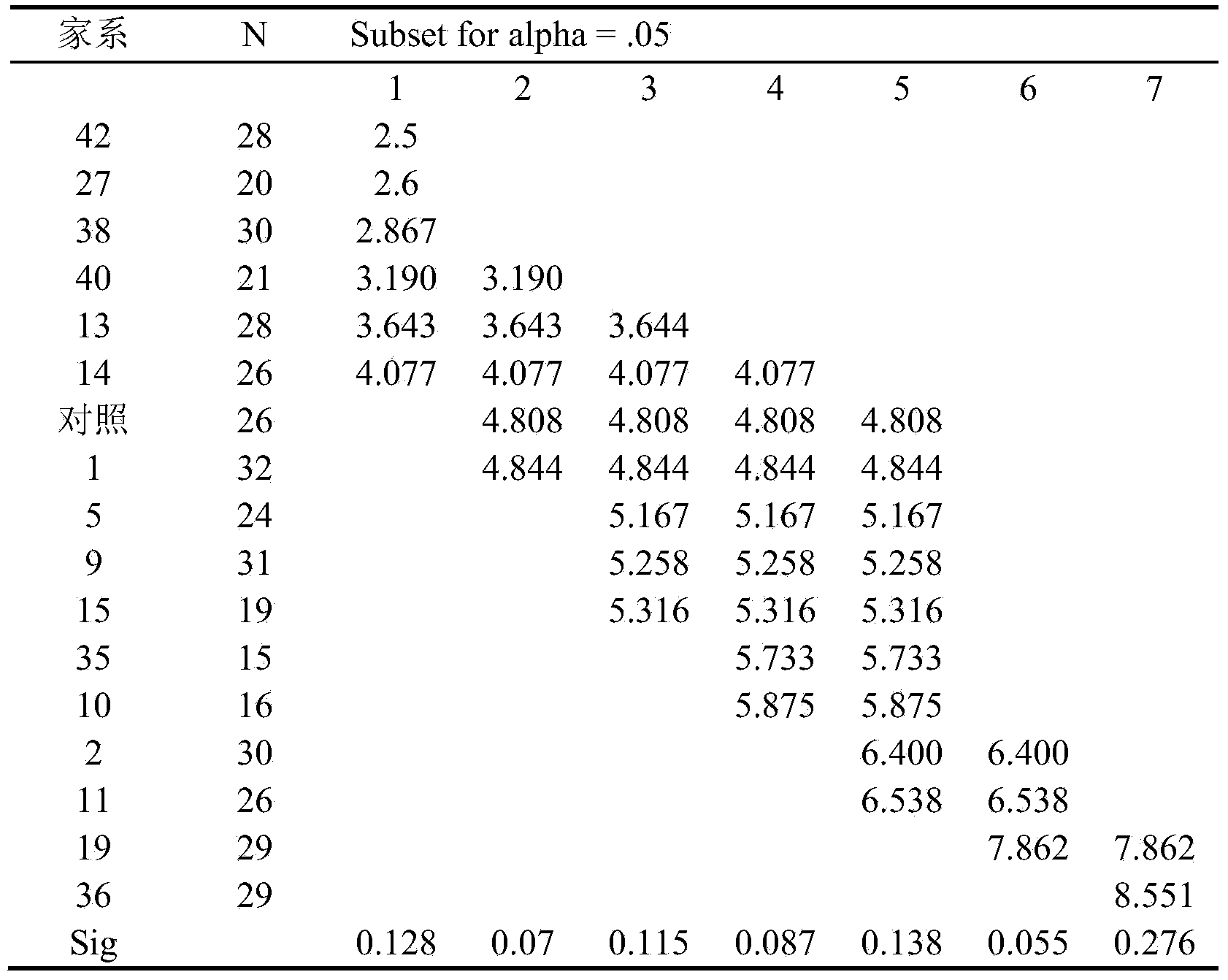SNP (single-nucleotide polymorphism) locus related to heat resistance of Paralichthys olivaceus and application thereof
A technology of heat resistance and site, applied in the direction of recombinant DNA technology, DNA / RNA fragments, etc., can solve the problem of SNP screening related to heat resistance, and achieve the effect of shortening the breeding time, low cost and strong purpose
- Summary
- Abstract
- Description
- Claims
- Application Information
AI Technical Summary
Problems solved by technology
Method used
Image
Examples
Embodiment 1
[0016] Flounder HSP70 gene cDNA and DNA sequence cloning in the present invention comprise the following steps:
[0017] a) extraction of total RNA from the heart of flounder and extraction of muscle DNA;
[0018] b) synthesis of cDNA first strand;
[0019] c) Obtaining the full-length cDNA sequence and DNA sequence of the target gene.
[0020] The specific operation is as follows:
[0021] a) Extraction of total RNA from flounder. Total RNA was extracted from flounder heart according to the method of Trizol (Invitrogen, CA, USA); muscle DNA was extracted by phenol / chloroform extraction.
[0022] b) Synthesis of cDNA first strand. Using 2 μg of total RNA as a template, add 1 μl of 20 μMOligo d(T) respectively, make up to 13 μl with DEPC water, mix well and spin off. Incubate at 70°C for 10 min, immediately place on ice, add in sequence: 5 μl 5×M-MLV Buffer, 5 μl IdNTP (2.5 mM), 1 μl RNasin (40U / μl), 1 μl M-MLV (200U / μl); after mixing and centrifuging, 42°C, 90min. Store...
Embodiment 2
[0027] Example 2 Screening of SNP sites related to heat resistance in flounder HSP70 gene
[0028] The screening and correlation analysis of SNP loci related to heat tolerance traits in the HSP70 gene of flounder flounder include the following steps:
[0029] a) Construction of flounder family
[0030] b) Temperature tolerance experiment of flounder
[0031] c) Acquisition of relatively heat-resistant and heat-labile trait populations
[0032] d) Screening and correlation analysis of SNP sites
[0033] The specific operation steps are as follows:
[0034] a) Construction of flounder family
[0035] The first-generation population with good growth traits selected in the family was taken as the parents, and individuals without genetic relationship were selected for random combination. A half-sib family was established with a male-to-male ratio of 2:1; a full-sib family was established with a male-to-male ratio of 1:1. All families were cultured under the same culture condi...
Embodiment 3
[0047] Example 3, the application of SNPs in screening heat-resistant individuals / family
[0048] 1. Screening of heat-resistant broodstock
[0049] The fin rays of the parents to be screened were cut, DNA was extracted, the parental HSP70 gene sequence was amplified with primers HSP70fw1 and HSP70rv1, and sequenced, the SNP site genotype of the HSP70 gene was detected, and the parent fish that matched the genotype as heat-resistant were selected.
[0050] 2. The construction of the family line
[0051] The whole-sib and half-sib families were constructed with broodstock whose genotype was heat-resistant, and the family with unscreened broodstock was used as the control group.
PUM
 Login to View More
Login to View More Abstract
Description
Claims
Application Information
 Login to View More
Login to View More - R&D
- Intellectual Property
- Life Sciences
- Materials
- Tech Scout
- Unparalleled Data Quality
- Higher Quality Content
- 60% Fewer Hallucinations
Browse by: Latest US Patents, China's latest patents, Technical Efficacy Thesaurus, Application Domain, Technology Topic, Popular Technical Reports.
© 2025 PatSnap. All rights reserved.Legal|Privacy policy|Modern Slavery Act Transparency Statement|Sitemap|About US| Contact US: help@patsnap.com



